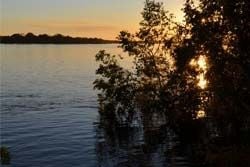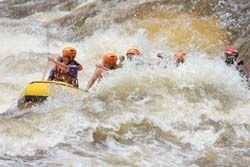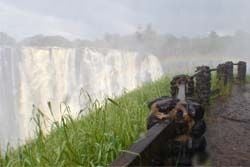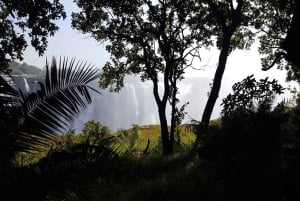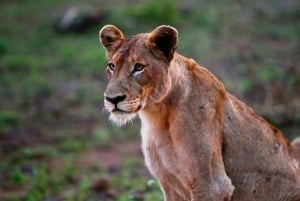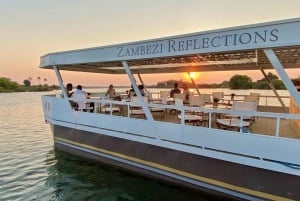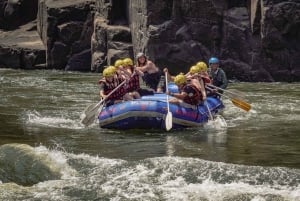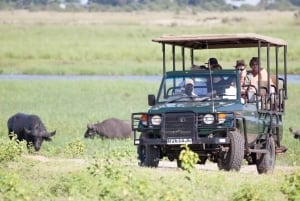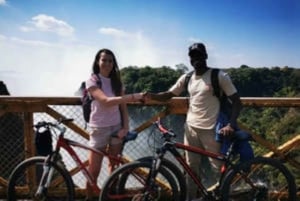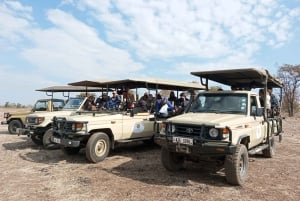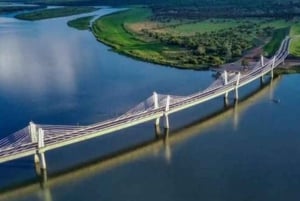Livingstone
This vibrant town has an economy based around tourism, adventure activities and the spectacular Victoria Falls. There is an exciting buzz around the town and surrounding areas with tourist vehicles nipping around, vendors and curio sellers offering their wares from beautiful carvings and beadwork to dodgy items of questionable origin. This is a place to see and do and then settle down over a refreshing sundowner and compare notes and experiences with fellow travellers, and listen to fascinating tales recounted by your host before planning your next exciting experience.
There are so many adventure and bucket list activities to keep a thrill seeking visitor busy, bungee jumping, abseiling, gorge swing, walk with lions, white water rafting, scenic helicopter flights, microlight flights quad and mountain biking, jet boat, swimming in Devil’s pool, horseback trails and elephant back safaris.
For a more relaxing time, walk in the rain forest and feel the spray from the Falls, take a sunset cruise on the upper Zambezi River, visit Mukuni Village and experience the local culture and way of life, or, for a rare and ethereal experience, witness the lunar rainbow over the spray of Victoria Falls during full moon. Any visit to Livingstone and Mosi-oa-Tunya will be one to be remembered.
Quick Facts about Livingstone Town
- The original European settlement developed at a site above the falls known as the Old Drift, the most suitable spot to cross the Zambezi.
- In 1897 this site became the first municipality in the country.
- The decision was made to move the settlement to what was known as Constitution Hill at the turn of the 20th Century due to the high incidences of malaria along the banks of the Zambezi.
- On February 5th, 1905 the settlement was officially named Livingstone after David Livingstone.
- In 1907 Livingstone became the capital of North-Western Rhodesia and in 1911 capital of Northern Rhodesia, now Zambia.
- In 1935 the capital was moved to Lusaka but Livingstone remains the tourist capital of Zambia.
- The town has preserved much of its colonial character with a number of historic buildings protected under the Monuments Act 23 of 1989.
Quick Facts about Mosi-oa-Tunya/Victoria Falls
- The explorer David Livingstone is believed to be the first European to see the falls. In 1855 he wrote, "No one can imagine the beauty of the view from anything witnessed in England. It had never been seen before by European eyes; but scenes so lovely must have been gazed upon by angels in their flight."
- Mosi-oa-Tunya is one of the seven natural wonders and was listed as a UNESCO World Heritage site in 1989.
- Mosi-oa-Tunya is the name given by the Kololo tribe living in the area in the 1800s. Today this is translated as “The Smoke that Thunders” but it is probably more accurately “The Smoke that Rises”. nrzam.org.uk/NRJ/V1N4/V1N4.htm (Correspondence)
- This vast curtain of falling water is about 1708 meters wide with the deepest point being 108 meters.
- At full flow more than 500 million litres per minute thunder over the falls with a deafening roar, soaking everything and everyone in its rain-like spray. A trip across the Knife-Edge Bridge to view the Eastern Cataract can leave the visitor completely saturated.
- In the low water season this deluge is reduced to approximately 10 million litres per minute.
- Downstream of the Falls, the river has eroded eight deep zig-zag gorges through the changing positions of the waterfall. This is a spectacular example of the erosive power of water. Upstream are a series of beautiful riverine islands. The region is the breeding sites for four endangered and migratory bird species making it an Important Bird Area. Taita falcon breeds in the gorges, as do black stork, black eagle, peregrine falcon and augur buzzard.


